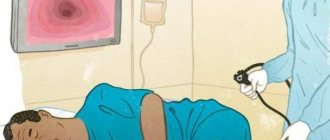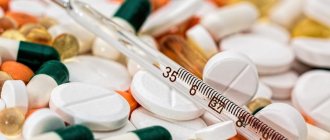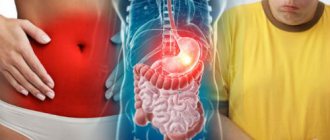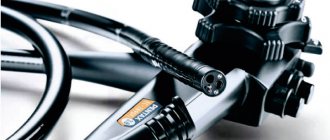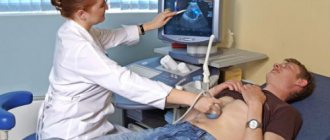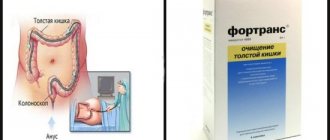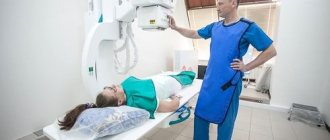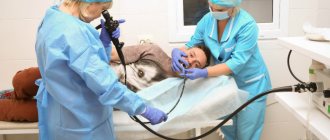An unpleasant medical procedure in which a special tube is inserted into the patient's colon is called a colonoscopy. With its help, an image is obtained that allows one to get a clear picture of the processes occurring inside the body. The examination is associated with a certain discomfort, so sometimes people prefer to undergo it under anesthesia, which, on the one hand, complicates the preparation, and on the other, allows you to avoid problems.
What is a colonoscopy and how is it performed?
A colonoscopy under anesthesia is not much different from a regular one. In any case, this is a diagnostic test in which a probe on a long tube is inserted into the colon. It is equipped with a tiny video camera and has the necessary equipment to perform a biopsy if the need arises.
The research process looks like this:
- The patient goes through the preparatory stage: he adheres to a diet, takes a laxative, ensures that the stool becomes transparent, and that there is nothing left in the intestine that could interfere with the movement of the probe.
- He comes to the doctor, where he receives either local anesthesia or general anesthesia. He lies down on the couch, removing everything from the lower part of the body and tucking his knees.
- A probe is inserted into the anus, a little air is pumped into the intestine so that it does not stick together and the clearest picture can be obtained.
- The doctor examines the walls of the intestine, if necessary, removes foreign objects, stops bleeding, removes polyps and connecting ties, restores intestinal patency, and takes material for a biopsy. The whole procedure usually lasts no more than half an hour.
- The results of the study are recorded on disk so that they can be reviewed later. The doctor writes a conclusion.
- The patient recovers from anesthesia or, after getting dressed, immediately leaves the office.
Side effects are sometimes observed after a colonoscopy. But even if not, it is still advisable to follow a gentle diet for several days after it, so as not to subject the body to additional stress.
Bowel biopsy results and possible complications
Before an endoscopic examination of the gastrointestinal tract with a biopsy, the patient must give his written consent to the manipulation, and the doctor is obliged to explain not only its meaning and purpose, but also talk about possible complications. The risk of adverse consequences depends on the nature of the pathology, the quality of bowel preparation, and the skills and qualifications of the specialist. The most common complications of intestinal biopsy are bleeding and perforation. In the first case, it is enough to coagulate the damaged vessels, in the second, a surgical operation to restore the integrity of the intestine is indicated. If an injury to the wall of an organ leads to its rupture and peritonitis, the patient is urgently taken to the operating room, where the defect is immediately sutured. A rupture of the intestine can be provoked not only by rough insertion of instruments, but also by gases that were not removed at the preparation stage. Coagulation of blood vessels or excision of a tumor with an electrocoagulator can lead to an explosion of gases and serious injury to the intestinal wall, which can be avoided by properly preparing for the study.
Biopsy results are usually ready after 7-10 days, maximum 2 weeks. Pathologists study the microscopic structure of intestinal tissues and pass on conclusions about the nature of the pathology to endoscopists, gastroenterologists, and proctologists, who decide what treatment the patient needs. The attending physician must interpret the conclusion of the histological analysis; doing this on your own is highly discouraged in order to avoid erroneous judgments and premature concern.
The pathologist’s conclusion may include indications of:
- chronic colitis requiring diet and conservative therapy;
- adenomas are benign tumors;
- the presence of ulcerative lesions of the duodenum;
- Crohn's disease, ulcerative colitis, celiac disease;
- malignant tumor.
A biopsy of a polyp of the rectum or overlying parts most often shows that the glandular outgrowth is a benign tumor, which, however, may have signs of dysplasia, that is, a precancerous process. There is no need to panic with this conclusion, because usually polyps are completely removed during a biopsy. Dysplastic processes and adenomas do not require further surgery or other antitumor therapy, but require annual monitoring of the condition of the intestines, the owner of which should be under the close attention of doctors. If an intestinal biopsy shows the presence of adenocarcinoma, that is, a malignant tumor, the patient is referred to an oncologist to decide on tumor removal and chemotherapy and radiation therapy.
Types of anesthesia
In the standard version of the procedure, the probe itself is lubricated with an anesthetic. When it comes into contact with the intestinal walls, the medicine reaches them, is absorbed and reduces pain. However, if indicated or simply desired by the patient, anesthesia is used. It comes in two varieties:
- Medication sleep.
The safest way. The patient falls into a half-asleep, hears the doctor perfectly, retains the ability to follow his instructions, but experiences discomfort to a much lesser extent or does not experience it at all. The drugs are as modern as possible, the load on the body is small. - General anesthesia.
It puts a strain on the cardiovascular system, so it is not recommended for people with cardiovascular diseases and those who have recently suffered a stroke or heart attack. It has a negative effect on the lungs, so it is also not recommended for asthmatics and other patients. During general anesthesia, the patient is unconscious, does not experience any discomfort, and does not respond to any requests. After waking up, needs observation for at least 24 hours.
Before you determine which type is right for you, you will need to talk to an anesthesiologist and get tested.
Methods for collecting biomaterial
Depending on the level of damage and the expected diagnosis, various options for collecting material can be used:
- Trephine biopsy. Tissue samples are collected using a hollow tube with pointed edges.
- Incisional type with sample collection after a surgical incision is made.
- Scarification type - scraping of cells from the surface.
- Puncture of the rectum using a special needle.
- Loop sampling, using a coagulator and a special metal loop, is used, for example, for biopsy of a sigmoid colon polyp with its simultaneous removal.
- The pinch method uses special thin forceps, for example, when biopsying a colon tumor.
Modern methods of collecting material for research are safe, the procedures are painless and quick.
How to prepare for a colonoscopy?
Preparation is a very important stage on which the effectiveness of the procedure depends. If there is feces in the lumen of the colon, the doctor will not be able to make an accurate diagnosis, because he will not see everything. On the day before the study, the patient is prescribed a laxative: a single dose in the evening, after which he is not allowed to eat anymore.
If the procedure is scheduled for early morning, this is enough. If later, then the laxative is taken a second time, a couple of hours before the appointment. The main indicator that the colon has been cleansed is almost colorless liquid stool.
Preparation
To perform a high-quality biopsy of an intestinal polyp, tumor focus or suspicious area, preliminary preparation and cleaning of the intestine from contents and gases are necessary. Before the biopsy, you must stop eating at least 8-12 hours before the procedure. You first need a light diet for three days before collecting the material, the use of cleansing enemas or the use of special medications prescribed by the doctor according to the scheme.
The day before the test, you need to switch to juices, water and broths; in the morning before the test, you can only drink water.
Diet
Basic preparation for intestinal colonoscopy under anesthesia begins a few days before. The doctor gives recommendations according to which the patient needs to change the diet so that it consists mainly of foods that are easily excreted and do not irritate the digestive system.
You can definitely eat:
- dishes from lean varieties of meat and poultry, as well as white fish;
- boiled eggs;
- boiled white rice;
- fermented milk products without additional additives;
- honey, cheese;
- dried white bread.
Clear broths, nectars, weak green tea, fruit juice, and water are allowed.
You should avoid anything that can cause intestinal irritation: caffeinated drinks, alcohol, cigarettes.
You definitely can’t eat plant foods that are rich in fiber: beans, cabbage, all cereals except rice. Canned food, sausage and frankfurters, fermented milk and dairy products with additives are not allowed.
The result of the study depends on how carefully the diet is followed.
What is a colonoscopy with biopsy?
As the name suggests, the method combines two medical procedures:
- Colonoscopy. This research method using an endoscope allows you to assess the condition of the inner wall of the colon, which consists of the colon (ascending, transverse, descending), sigmoid and rectum. Thus, in one step, the doctor can treat or identify a disease in several parts of the digestive system at once. The modern version of colonoscopy involves the use of intravenous anesthesia, so the patient sleeps during the examination and does not feel pain or discomfort.
- Biopsy. In medicine, this term is collective and implies the collection of cells or a piece of tissue intravitally. There are many variations of the procedure, but during a colonoscopy, a targeted or loop biopsy is usually used. In the first case, the doctor takes a piece of tissue from a precisely identified pathological focus, which is determined during a colonoscopy. An exploratory biopsy involves taking tissue from an area that appears normal, but may already be undergoing some changes at the cellular level.
The combination of colonoscopy with biopsy allows you to simultaneously identify pathological foci, remove them, if possible, and select tissue samples for further pathological examination. At the same time, the degree of reliability of the results obtained is very high, which is especially important when identifying oncological tumors. This is why biopsy in oncology is considered the gold standard for diagnosis.
Contraindications
Colonoscopy under anesthesia is not performed if the patient:
- chronic bronchitis or asthma;
- peritonitis;
- pregnancy;
- problems with blood clotting;
- colitis at a late stage;
- inflammatory and chronic diseases in the acute period.
Heart problems are not a contraindication for colonoscopy in general, but do not allow it to be performed under general anesthesia.
Are there any disadvantages to colonoscopy?
The procedure does not have any disadvantages that outweigh the advantages, since this is the only such accurate way to examine the intestines. Of course, it is accompanied by discomfort, both physical and psychological, requires careful preparation and has its limitations, but it can be accepted.
Even the list of possible side effects is quite short:
- allergic reaction to drugs used in the process;
- nausea, vomiting during and after meals;
- increase in pressure and temperature;
- pain in the intestinal area.
Sometimes the procedure results in bleeding from the anus, problems with bowel movements, and even infections. This indicates that the intestinal walls were damaged in the process, that is, the doctor was not professional and careful. This is why it is so important to choose a trusted clinic with good reviews.
Side effects of colonoscopy
Colonoscopy usually goes without consequences. Serious complications occur very rarely. Most often they are associated with the doctor’s lack of experience in performing such endoscopic manipulations. Possible risks include:
Who is it suitable for?
Colonoscopy under anesthesia is definitely performed if:
- Inflammatory processes occur in the intestines. Ulcers, colitis, enteritis are accompanied by pain; if the probe inaccurately touches the intestinal walls, this will cause too much discomfort to be ignored.
- The patient is less than twelve years old. It is difficult for the child to relax the muscles enough for the examination to be effective and produce results, in addition, pain during the process can be delayed and create unpleasant associations with hospitals in general.
- There are adhesions in the intestines formed by connective tissue. When air enters the intestine, this also provokes severe pain, which cannot be written off.
- The patient has a psychiatric diagnosis that will not allow him to sufficiently prepare, relax, and in some cases even understand what is happening.
- The patient has a low pain threshold and knows that the examination will be too unpleasant for him.
In a private clinic, a colonoscopy under anesthesia can be done simply at will, without indications.
Indications
A biopsy of the colon or small intestine may be performed for a number of indications. It can be:
- detection of a tumor process based on the results of MRI or CT;
- situations after colonoscopy, if a suspicious tumor or part of the intestine is identified, which requires a clarifying biopsy of the rectum;
- numerous erosions or ulcers in the intestines;
- long-term inflammation of the intestinal wall, the causes of which are unknown;
- suspicious symptoms (persistent flatulence, constipation, blood or mucus in the stool), if they do not correspond to the preliminary diagnosis;
- Polyposis identified by biopsy requires a biopsy of the colon polyp.
The doctor may determine additional indications for performing, for example, a biopsy of the duodenum, if monitoring during treatment or a more targeted diagnosis of a serious pathology is necessary.
Diet after colonoscopy
The menu after the procedure should also not be overlooked. What you can do:
- Available on the same day as the session.
- Eat up to seven times a day, but in small portions.
- Choose foods that are easy to digest and will not irritate the intestines.
- Steam or oven instead of frying.
- Try to eat only warm foods, warm up cold foods, and cool down hot foods.
The list of specific products looks like this. Allowed:
- Any drinks with electrolytes, preferably mineral water.
- Low-fat soups - vegetable or clear from white meat.
- White fish and white meat - preferably in the form of cutlets, meatballs or meatballs.
- Puree - from carrots, potatoes, apples, and other fruits.
- Boiled eggs.
Alcohol, cigarettes, baked goods, and caffeinated drinks should be avoided. Meals should be light throughout the week. You should not make an exception for your favorite foods - this can lead to constipation or diarrhea.
Example menu
As an indicative menu for the week, you can use the following option:
1st day:
- Breakfast: thin porridge, tea;
- Second breakfast: curd mass;
- Lunch: vegetable puree soup, boiled breast;
- Afternoon snack: kefir;
- Snack: yogurt;
- Dinner: buckwheat porridge, boiled meat.
Day 2:
- Breakfast: cottage cheese casserole, jelly;
- Second breakfast: compote;
- Lunch: chicken broth with dumplings;
- Afternoon snack: kefir;
- Snack: yogurt, banana;
- Dinner: stewed vegetables.
3rd day:
- Breakfast: steamed omelette, tea;
- Second breakfast: fermented baked milk;
- Lunch: milk noodle soup;
- Afternoon snack: curd mass;
- Snack: apple compote;
- Dinner: steamed fish, mashed potatoes.
4th day:
- Breakfast: rice porridge, compote;
- Second breakfast: peach;
- Lunch: mixed vegetable soup (without cabbage);
- Afternoon snack: jelly, apple pie;
- Snack: rosehip infusion;
- Dinner: zucchini stuffed with meat and rice.
Day 5:
- Breakfast: soft-boiled egg, tea with milk;
- Second breakfast: yogurt, apple;
- Lunch: chicken breast baked with cheese, baked vegetables;
- Afternoon snack: kefir;
- Snack: jelly from yogurt, cottage cheese, fruit;
- Dinner: boiled rice, boiled meat stew.
Day 6:
- Breakfast: oatmeal porridge, tea;
- Second breakfast: stewed apple and carrot salad;
- Lunch: meat baked in sour cream sauce; boiled rice;
- Afternoon snack: fermented baked milk;
- Snack: tea;
- Dinner: boiled fish, baked potatoes.
Day 7:
- Breakfast: steamed omelet, tea;
- Second breakfast: curd mass, banana;
- Lunch: pilaf with fruit, steamed vegetables, bread containing bran;
- Afternoon snack: rosehip infusion, crackers;
- Snack: jelly, fruit;
- Dinner: baked meat with potatoes, boiled meat pilaf, tea.
Portions should be kept small, each meal is calculated based on 200-250 g of ready-made dishes in total, not including tea. Between meals, you should follow the rule: drink a glass of water 40 minutes after eating. The attending physician may recommend other menu options, taking into account the patient’s well-being before the colonoscopy and after the manipulations. The menu option shows that recovery after the procedure can take place with adequate nutrition, without compromising the sense of taste.
Advantages of colonoscopy under anesthesia at the Russian Academy of Sciences
If you are looking for where to have a colonoscopy in Moscow, you should choose the Central Clinical Hospital of the Russian Academy of Sciences. Here it is offered:
- High-quality equipment that allows you to get a clear picture with minimal discomfort for the patient.
- Experienced doctors who will tell you how to prepare for the procedure, prescribe all the necessary tests and correctly interpret the results.
- The ability to conduct research under anesthesia without special indications for it.
- Always careful, attentive and ethical attitude towards each patient.
Low cost of services when compared with other clinics.
You can make an appointment for a colonoscopy under anesthesia by phone or on the website.
